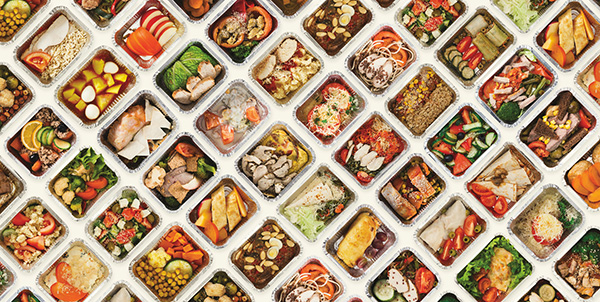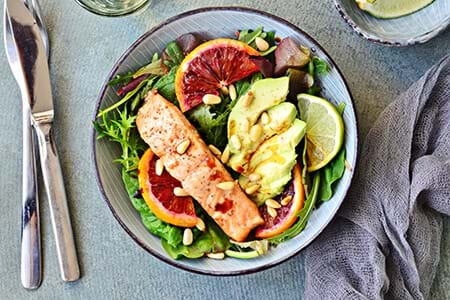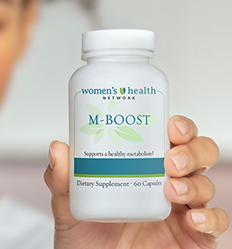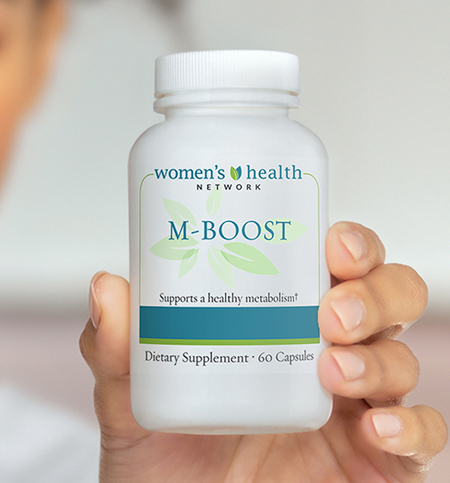The meal delivery service industry has grown tremendously since first being introduced in Europe in the early 2000s and arriving in the US with Hello Fresh and Blue Apron in 2012. In 2023 there were over 200 meal delivery kits on the market and the industry is expected to continue to grow.

Prepackaged meal services are not only designed to make mealtime prep more convenient and less of a chore, but many also claim that they are healthy and can help you lose weight. Pre-measured meal plans are now available for nearly every popular diet out there, from Keto, Paleo and low carb to low calorie and low fat.
Since some of the most common obstacles to making changes to eating habits are time, nutrition knowledge and cooking skills, these meal delivery kits certainly sound like the answer we’ve all been looking for.
But are they really set up to deliver sustainable, healthy weight loss?
Let’s weigh the pros and cons.
Convenience comes at a price
You want to go Keto, but have no idea where to start. The doorbell rings and there is your answer: a box of Keto meals ready to prep for the week.
As their main “pro,” meal delivery kits for weight loss claim to deliver on convenience. Depending on the type of service you choose, your meals will arrive either already prepared and ready to heat, or with all the necessary ingredients to prepare yourself at home. These kits promise the hope of simplifying the complexity of planning and preparing healthy meals and eliminating the chore of grocery shopping.

In reality, however, using a meal delivery service will still require you to spend time each week planning and selecting your meals. And you’ll likely still need to plan and shop for staples and items to fill the gaps. Can you completely avoid the grocery store during a typical week on a delivered meal service? Not really.
Additionally, checking the reviews of popular meal services, customers noted that the prep and cooking times took longer than advertised and that occasionally ingredients were missing. In other words, the meals ended up being inconvenient to make.
Are you missing out on a key to sustainable weight loss?
Even though cooking and food shopping take time and effort, there is a lot of research that demonstrates that home cooking promotes healthier eating habits. Even if you are successful in the short term in losing weight with delivered meals, what happens when your pricey subscription runs out and the weekly boxes of ingredients stop showing up? Will you know how to “start from scratch” in managing your meals?
Also, consider the health of your family and their relationship to food. When children grow up learning how to cook, they are more likely to meet the recommended daily amounts of healthy fats, vegetables, fruits and whole grains and less likely to eat fast food. So while we may be gaining some convenience with a meal delivery service, we may also be losing our own skills of making choices to meet our nutritional needs — and compromising our ability to pass healthy food shopping and cooking skills on to our kids.
Alternatives for quick and easy healthy meals that build good habits
Whether your biggest obstacle is time or cooking skills, there are lots of ways to make meal planning more efficient. No matter which specific healthy eating/weight loss plan you are following, there are tried and true ways to spend less time in the kitchen to make it happen.
- Have a plan! Spend a few minutes each week planning meals and grocery lists.
- Batch cook. Cook all your meat and grains on a Sunday and have them ready to assemble a variety of mix and match meals during the week. This gives you the ability to dig deep into recipes that meet your dietary needs and plan meals everyone in the family will enjoy.
- Try a sheet pan recipe! Roasting all your veggies and protein in one pan makes prep and cleanup a breeze! There are so many varieties of recipes to choose from across all popular diet types. Sharing one-pan recipes is all the rage on social media these days. Check TikTok for fun ideas!
- Similarly, one pot meals are another way to cook with low prep and easy clean up.
- Keep it simple! We tend to overcomplicate our cooking. Instead of a new recipe, just grill or saute a lean protein, cook up a pot of brown rice or other whole grain, and steam a big serving of vegetables. Voilà, a healthy meal for everyone that can be adjusted to most popular diet plans (i.e., have a smaller portion of rice for a meal that is lower in carbs).
- Put meals on repeat. Soup on Sunday, Meatless Monday, Taco Tuesday. You get the idea. Our brains love novelty, but reducing decisions makes it much easier to execute a plan for healthy meals.
The real costs of prepared meals
The cost of meal delivery services has come down a lot in recent years and some of these services may well deliver on cost. Rates are designed to be lower than the cost of going out to dinner or ordering takeout, but higher than the cost of cooking at home. Depending on the service you choose, meals can be anywhere from $5-30 per person.
It’s important to note that while these companies spend a significant amount of money in advertising to draw in new customers with first-time discounts, ultimately, most people when unsubscribing cite cost as the reason. Sometimes there is a low introductory offer before prices go up for the remainder of the subscription.

If the alternative to cooking is eating out, which is not only more expensive but where sticking to a diet plan is more difficult, a delivery kit does deliver on cost. But, consider a different perspective. We may also pay a cost when we don’t prepare our own food. Multiple studies have shown that home cooking is associated with better diet quality and better health outcomes.
We tend to resort to going out to dinner when we either don’t have something easy or delicious to make at home. So keep an “emergency” meal on hand for those nights you’re strapped for time and would otherwise be tempted to eat out. This could be an easy canned soup or a freezer meal, one you’ve purchased or prepped ahead of time.
Portion control is out of your control
Having controlled portions can be a great jumpstart for people who struggle with overeating. Meal kits can deliver on portion control by providing a limited number of servings per meal, theoretically preventing you from overeating. In a perfect world, you prepare your meal, eat the portion the meal delivery service preordained, and then go about your day until the next mealtime.

However, it’s important to understand that most services only offer one portion size — there isn’t much wiggle room. This can be problematic because men and women and people of different weights and sizes all have varying nutritional needs. Meal delivery limits your portion for what’s on your plate, but this can’t prevent you from having seconds, or raiding the refrigerator for leftovers later on in the night.
Here’s an alternative
If you’re cooking at home and know that portion control is an issue for you, there are several ways you can achieve this on your own. Pre-portioning your meal yourself gives you more control of creating a serving size that will meet your specific nutritional needs.
- Do the pre-portioning yourself! Purchase a few containers and immediately after serving yourself dinner, pack up the rest in individual portions. This can not only help with portion control, but also have you set up for the next day’s lunch or dinner later in the week.
- Batch it up! Batch cook and prep your breakfasts and lunches on the weekend so they are ready to grab and go.
- Snack with savvy! For snack items, purchase prepackaged single-serve items like nuts, hummus, or cheese sticks. Or if you have a little more time, portion them when you get home from the grocery so they are ready to grab and go. Store some snacks at work so they are on hand.
Meeting your nutritional needs
Most meal delivery services claim to deliver on nutrition by advertising healthy meals with a broad array of options to meet a variety of dietary needs and restrictions including Low Calorie, Low Carb, High Protein, Vegetarian and Keto. Although when it comes to marketing, there is no accepted definition of “healthy,” most experts agree that meals that are “healthy” include:
- Ingredients from mostly whole foods or minimally processed foods.
- A balance of nutrients with plenty of fiber, as well as essential vitamins and minerals.
- Moderate amounts of sodium.
Ingredients labels may be hiding a lot of unhealthy ingredients
Although labeled with names such as “Fit and Wholesome” or “Nutritionists’ Choice” the most popular services I reviewed included ultra-processed ingredients in many of their meals including seed oils like canola oil and sunflower seed oil; stabilizers and gums such as guar and gum acadia; and preservatives like sodium benzoate and sulfur dioxide. Additionally, many included copious amounts of added sugars.
Many of the more popular services also include refined grains like white rice or pasta over more nutrient-dense complex carbohydrates like 100% whole wheat or brown or wild rice or other whole grain options.
Browse these labels:
Not all meal delivery services are equal of course. There are companies that do offer a guarantee of being organic, whole food or non-GMO. Some even offer sustainably caught fish and humanely raised meats. Note that they are much pricier with meals closer to $20 or $30 a piece.
Cooking at home gives you control over your ingredients! If it’s as important to you to use less refined oils like olive or avocado, more complex whole grains like brown or wild rice, 100% whole wheat pastas, quinoa or farro; and avoid the gums, stabilizers and preservatives all together, then cooking at home may be the way to go.
Whether using a meal service or shopping at the store, it’s important to be an informed consumer. It’s easy to be misled by the front of the label packaging. The best bet is to always read the ingredient list on the back.
The secret to lasting weight loss? Nourish your body
Our best bet to promote health, achieve weight loss goals and reduce the risk of disease is to eat balanced meals consisting of nutrient dense whole or minimally processed foods, foods that are rich in protein, fiber, and important vitamins and minerals and other micronutrients.
The majority of experts say that for most women a balanced split of macronutrients is roughly 40% carbohydrates, 30% fats and 30% protein. This ratio helps promote weight loss, by providing enough carbs to fuel workouts, enough protein to build lean muscle mass and enough healthy fats to optimally produce hormones, key to women’s health and wellness.
Here at Women’s Health Network, we also promote eating the experts’ recommended amount of fiber which, for most women, is roughly 25 grams per day. Eating a healthy balance of macronutrients along with enough fiber can help ensure we are getting enough of the vitamins, minerals and antioxidants we need as well.
The majority of meals I reviewed from the most popular meal services did not follow these guidelines. Even several of the meals billed as “nutritionist’s pick” and “carb conscious” or “healthy kit” had an average of 45-51% fat, 28-30% carbs and 21-25% protein as prepared.
Additionally many were low on fiber. If you’re able to get in 20-25g of fiber before dinner, this might not be a problem, but it’s certainly worth noting. For males, who need significantly more fiber, a low-fiber dinner might be problematic.
One benefit of the prepared meals is that they come with a nutrition label so you can see exactly what you are eating. But when we are eating primarily whole nutrient-dense foods with a balance of lean protein, complex carbohydrates in the form of whole grains and beans, and plenty of vegetables and fruits we don’t have to rely on nutrition labels.
Sodium
If your goal is to lose weight, chances are that you are also facing high blood pressure and are watching your sodium intake. The American Heart Association recommends most Americans consume less than 2,300 mg per day, but ideally no more than 1,500 mg, especially for those with high blood pressure. Most of the meals I reviewed from the popular services had 800-900 mg of sodium as prepared. If you’re watching your blood pressure that could be 50% of your sodium intake in one meal! Perhaps that could be fine if your sodium intake is under control throughout the rest of the day, but more than likely this high sodium content is problematic for most people.
Bottom line: If you are considering using a service, be an informed consumer and check the nutrition labels not only for calories, but also for macronutrients, sodium, added sugars, and fiber. Many services don’t offer this information on their site, but can be found on many nutrition apps such as My Fitness Pal or Nutritionix
Home Chef Grilled Chicken With BBQ Sauce & Mashed Potatoes
How Do I Decide What’s Best for Me?
We tend to fall into the trap of thinking in terms of black and white: either meal delivery or cooking at home. While ultimately cooking every meal at home from scratch would be ideal, some people may benefit from using a delivery service to fill in a gap and address an area where they really struggle.
For example, it might be very helpful for a busy commuter to use a service that offers pre-made smoothies for a few weeks. Once she feels the benefits of eating a nutrient-dense breakfast, then she might slowly begin to try making her own based on the ingredients she finds she likes from the delivery service.
Or it could be helpful for a college student who is just learning to cook for a first semester away from home.
Or if you’re in a place where having some guardrails up around what you’re allowing in the house, a meal service can be a great benefit.
For most of us, using a meal delivery kit just isn’t sustainable over the long term. At some point, learning to plan, shop and prepare food is the most empowering thing we can do for our health and wellbeing.
Ultimately, however, we aren’t here to tell you what to do. We are here to help you make the best decisions for your health.
If you’re still on the fence, try using this helpful coaching tool.
Weighing the pros and cons of both using a meal delivery service and not using a meal delivery service can help you arrive at a more informed decision. We’ve started to fill out the lists below, but encourage you to do so on your own as your individual needs and circumstances will be unique to you.
Using a meal service for weight loss
Benefits/Pros
– Possible convenience.
– Don’t have to cook as much.
– Possible portion control.
– Less expensive than going out to eat.
Costs/Cons
– Still have to plan and keep up with selecting meals on the app.
– May still have to cook some depending on service.
– Frozen meals are unappealing.
– More expensive than cooking at home.
– Less nutritious.
– May have ultra-processed ingredients.
– May have too much sodium or added sugar.
– Likely not going to help me lose weight.
– Not going to keep me from snacking or overeating outside of the plan.
Not using a meal service/meal prepping myself
Benefits/Pros
– Proven to lead to better health outcomes
– More nutritious
– Will have healthy leftovers from dinner for my lunches
– I learn to cook for myself
– I teach my kids to cook
– My kids will likely have better health outcomes when they are adults
– Less expensive
– More customizable
– Can use local ingredients
– More flexible for my family
Cost/Cons
– Have to plan
– Have to shop (but could use grocery delivery)
– Have to cook
– Might have to learn some things about cooking or nutrition (but I can learn new things!)
If you are considering using a meal program, make sure you do your homework and pick one that offers meals that fall within the guidelines for healthy eating for YOU.
If you decide to go it on your own, also do your homework and plan for meals that fall within healthy eating guidelines for you. We have a lot of great information to help you reach your weight loss goals, including our free weight loss quiz to help you pinpoint your strengths and challenges and your best forms of support. Take our free quiz now!
Resources:











